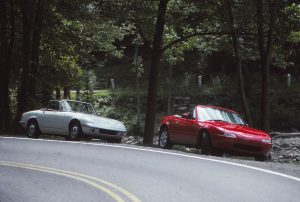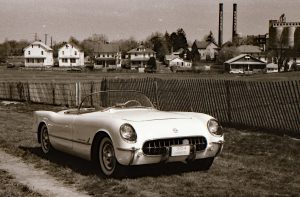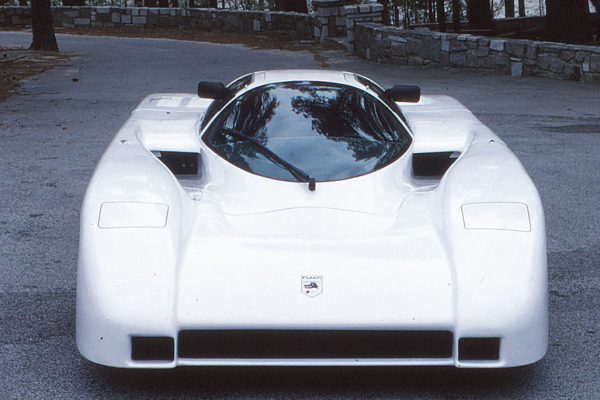Originally published in Sport Compact Car March 2001
In 1988 Chevrolet went racing in the IMSA GTU class and that, simply, is the reason for the 1988-89 Chevrolet Beretta GTU. Of course, the reason Chevrolet racing is, simply enough, marketing. It certainly has paid off grandly for anyone associated with NASCAR, despite the fact that the tube-chassied “stock car” racers are mere silhouettes–if that– of real, road-worthy automobiles. So why not summon the same genie in road racing?
Why not indeed? For almost a decade, Mazda had locked down IMSA’s GTU class with “seed money” supporting a gaggle of independent racers piloting RX-7s. So, figured Chevrolet, bring a dump truck full of greenbacks, and beam it at a factory team running the sport-ish Chevrolet Beretta coupe and go after the GTU title. And while they were at it, Chevrolet would build a special “road version” of the Beretta called, appropriately enough, the Chevrolet Beretta GTU.
“No car company anywhere is so closely identified with motorsports and performance as Chevrolet,” Chevrolet general manager Robert Burger was quoted in a press release that blithely ignored Porsche and several other make that could have been named. But Burger went on to explain, “We’re aiming this new Beretta as a special group–racing aficionados who will be able to see a Beretta GTU race on Sunday, and buy a similar Beretta at any one of Chevrolet’s 5,000 dealers on Monday.”
Easy enough, one would suppose, as Chevy had to build 5,000 Beretta GTUs to homologate the trunklid spoiler it wanted to use on the racer. Not that road car had much to do with the race car, the latter having tube frame supporting a front engine/rear drive configuration and fully independent suspension, with 320 horsepower under the hood. The showroom floor version, though, was a front-driver with a rear beam axle on coil springs, and only 130 horses from a pushrod V-6.
But the road car certainly tried to look the part, with its ducktail rear spoiler, deep front air dam and side skirts. Chevy spelled out “Beretta” on the windshield header and “GTU” on the flanks and rear bumper, and gave the car a body-color grille. Meat-slicer, 16-inch alloy wheels were wrapped with 205/55VR16 Goodyear Eagles. Also included was the Z51 suspension, part of the $1,500 GT package required before Chevy would sell you the $2,500 GTU package (all this atop the Beretta’s $10,135 base price). That was the good news. Chevrolet claimed the Beretta was capable of .92g on the skidpad. Car and Driver pegged it at a still then respectable .84g.
Alas, the ohv V-6 under the hood was less than inspiring. At 160 lb-ft of torque, it was at least 30 horses off the competition. Its 0-60 time of 9.6 seconds was average but rumble from its dual exhaust promised more.
The interior was uninspiring as well, with an ugly steering wheel with a single crossbar that intersected the rim at four and eight o’clock, and that just for starters.
Out on the track, Tom Kendall, who had won IMSA GTU in a Mazda RX-7 in 1986 and 1987, had been lured into the Chevy camp in 1988 to campaign a factory-supported Beretta (sponsored in part by Cars & Concepts, who “designed” the production GTU for Chevrolet). The result was that Mazda won only two races that season. Kendall repeated as champion–but in a Chevy Beretta.
Mazda, in turn, got serious about supporting specific teams and regained the title–with an MX-6 based racer—while Chevrolet kept the GTU as the top Baretta model.
That changed in 1990, as Chevy withdrew from GTU competition, axing the GTU street model as well, replacing it with the “GTZ.” Powered by Oldsmobile’s Quad Four engine, the 180-horse GTZ was significantly quicker, with more mature, less “boy racer” styling. No doubt marketing discovered that most Americans didn’t know what GTU–much less IMSA–was, and found “Z” to be much racier than “U”. The Beretta’s brief link to racing was severed, but not before the car made its mark in the record book.













What Do You Think?
You must be logged in to post a comment.